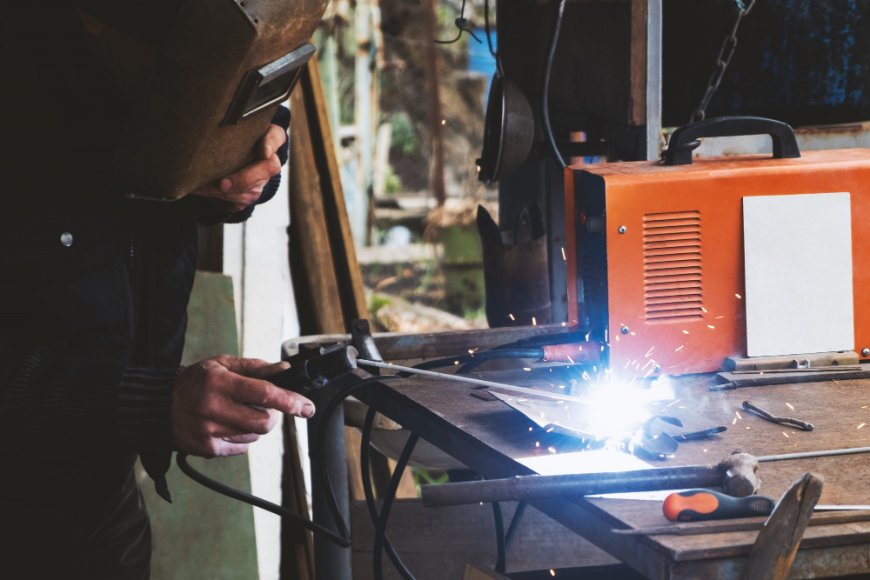Demystifying Soldering Fluxes: A Comprehensive Guide for Beginners
Soldering is a fundamental skill in electronics, metalwork, and plumbing, essential for joining metals together efficiently and securely.

Soldering is a fundamental skill in electronics, metalwork, and plumbing, essential for joining metals together efficiently and securely. However, achieving a strong and reliable solder joint requires more than just melting solder onto the joint. One crucial element in the soldering process is flux. Flux is a chemical compound that aids in soldering by promoting the flow of molten solder and removing oxidation from the surfaces to be joined. In this comprehensive guide, we will delve into the world of soldering fluxes, unraveling their types, functions, and best practices for beginners.
Understanding Soldering Flux:
Flux plays a vital role in soldering by facilitating the wetting action of solder, which ensures proper adhesion to the surfaces being joined. It accomplishes this by cleaning the metal surfaces of oxides, which can inhibit bonding, and by preventing further oxidation during the soldering process. Flux also promotes the flow of solder, allowing it to spread evenly across the joint, resulting in a stronger bond.
Types of Soldering Fluxes:
- Rosin Flux: Rosin flux, derived from pine tree resin, is one of the most commonly used types of flux in electronics soldering. It comes in various forms, including rosin-core solder wire and liquid flux. Rosin flux is ideal for electronics work because it leaves behind a non-conductive residue that does not require cleaning, making it suitable for delicate electronic components.
- Water-Soluble Flux: Water-soluble flux is another popular choice, especially in industrial applications. It contains organic acids that dissolve in water, allowing for easy post-soldering cleanup. Water-soluble fluxes are environmentally friendly and are often used in applications where flux residues must be thoroughly removed, such as circuit board assembly.
- No-Clean Flux: As the name suggests, no-clean fluxes are designed to leave behind minimal residue after soldering, eliminating the need for post-soldering cleaning in most cases. These fluxes contain synthetic resins and other additives that vaporize during soldering, leaving behind a thin, transparent residue. No-clean fluxes are commonly used in applications where cleaning is difficult or not practical.
- Paste Flux: Paste fluxes are thick, viscous formulations suitable for applications where a more controlled application is needed, such as plumbing and stained glass work. They come in jars or syringes and are applied directly to the joint using a brush or applicator. Paste fluxes are often formulated with a combination of rosin and other active ingredients for enhanced performance.
Choosing the Right Flux:
Selecting the appropriate flux for your soldering application is crucial for achieving optimal results. Consider the following factors when choosing a flux:
- Application: Determine the type of materials you will be soldering and the specific requirements of your project.
- Flux Type: Choose a flux type that aligns with your application needs, whether it's rosin for electronics, water-soluble for easy cleanup, or no-clean for minimal residue.
- Compatibility: Ensure compatibility between the flux and solder alloy you intend to use, as certain fluxes may be formulated for specific solder compositions.
- Safety: Consider safety precautions when working with fluxes, especially those containing volatile organic compounds (VOCs), and follow recommended handling procedures.
Best Practices for Soldering with Flux:
Once you've selected the appropriate flux for your soldering project, follow these best practices to ensure successful solder joints:
- Clean Surfaces: Thoroughly clean the surfaces to be soldered to remove any dirt, grease, or oxidation, as flux works best on clean metal surfaces.
- Apply Flux: Apply flux evenly to the joint using a brush, syringe, or applicator, ensuring complete coverage of the soldering area.
- Heat Control: Maintain proper heat control during soldering to prevent overheating, which can degrade flux effectiveness and compromise solder joint quality.
- Soldering Technique: Use proper soldering techniques, such as tinning the soldering iron tip and applying solder to the joint, allowing the flux to activate and facilitate solder flow.
- Post-Soldering Inspection: After soldering, inspect the joints for proper wetting and adhesion, and if necessary, clean off any residual flux using an appropriate cleaning solvent or method.
Conclusion:
Soldering fluxes are essential components in achieving high-quality solder joints, facilitating solder flow, and ensuring strong adhesion between metal surfaces. By understanding the different types of fluxes available, their functions, and best practices for their use, beginners can enhance their soldering skills and produce reliable soldered connections in various applications. Experiment with different flux types and techniques to find the combination that best suits your soldering needs, and remember to prioritize safety and proper handling when working with fluxes. With practice and knowledge, mastering the art of soldering with fluxes will open up a world of possibilities for creating and repairing electronic, metalwork, and plumbing projects with confidence and precision.
Looking for a reliable thermal spray powder supplier in India? Discover top-quality materials and exceptional service to meet all your thermal spray coating needs.
What's Your Reaction?



















